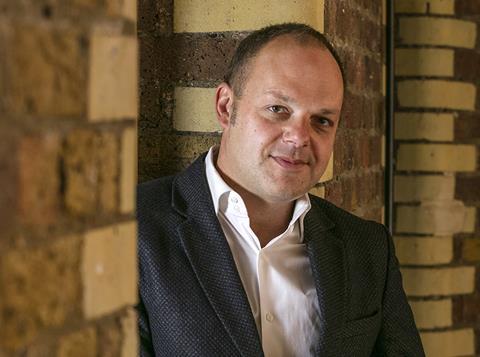Architects have spent years complaining about how their former project lead role has become marginalised. The Hackitt review is the chance for the profession to claim back territory
The Hackitt Review is a “watershed” moment for architects to claim back the influence they have ceded to other professions. But architects will need to work hard if they are to seize the opportunities presented by Dame Judith’s review, according to leading members of the profession.

As architects digest the 156-page report on building regs and fire safety, the emerging consensus is that it could be good news for the profession.
One of Hackitt’s key recommendations is that the roles and responsibilities of those involved in the design and construction of so-called “high-risk residential buildings” – those over 10 storeys – should be much more clearly defined. These roles are divided into three dutyholders: the client, the principal designer and the principal contractor, in an arrangement familiar from the CDM regulations.
This puts the principal designer firmly in the driving seat as they will have to ensure everyone involved in the design has suitable skills, knowledge and experience. The principal designer has responsibility for compiling and submitting full plans for building control approval.
But Hackitt does not specify who will take the role of principal designer – and this is where architects must take the initiative, says Laurence Osborn, a director at Grid Architects.

“This is the opportunity for architects to reclaim some ground,” he says. “The principal designer could be the M&E consultant but there’s a danger there. If the principal designer doesn’t have the skills to bring the whole thing together they will be putting the onus on the architect anyway. The architect is key. I don’t think there’s any other profession that can balance all of the complicated aspects of design in a high-rise building.”
The flip side of this longed-for opportunity is that architects could find themselves weighed down by onerous responsibilities they have little appetite for.
Rab Bennetts, co-founder of Bennetts Associates, says after 30 years of steady marginalisation of the profession this is a moment when architects need to take a stand.
“Culture change would be complex and full of difficult decisions – from how to take responsibility, to fees, approvals, tendering methods, specialist knowledge, qualifications,” he says. “But architects can’t have it both ways. Either we step up and reclaim a central position within the industry or we allow the marginalisation to continue to the point that we are just stylists.”

The size of architects’ public indemnity insurance cover speaks for itself, says Osborn. “We already have the responsibility; architects can already go to jail. Yet so much happens between finishing the design and the completion of the building that the architect has no control over. We might as well take responsibility and get paid for it.”
Could this mean architects will finally be able to charge higher fees?
“Based on this report principal designers will,” he predicts, “and therefore more practices will decide they need to take that principal designer role.”
This view is shared by Andrew Mellor, a partner at housing architect PRP which is advising the Ministry of Housing on building regs.
“Currently the principal designer doesn’t submit the building regs application; it’s the architect. So it’s suggesting to us the architect will be playing the principal designer role,” he says.
But Hackitt’s report is only a recommendation so architects will need to speak up if they’re serious, he warns.

“This is absolutely the time for the profession and RIBA to tell government, ‘We can do this’. Government doesn’t get that many responses to consultations,” he says. “It will be down to architects to respond.”
He identifies multiple opportunities for architects to create new workstreams, including site inspections, collecting and tagging data and photographs and controlling the BIM model.
“There’s a need for those skills,” he says. “It could be an opportunity for the architect to have a much wider role in compiling that data.”
Since Grenfell PRP has seen growing demand from clients for the traditional clerk of works role and Mellor suggests architects could offer that service too.
“Those who are forward-thinking and entrepreneurial will be thinking about the opportunities,” he says. “It might feel bad to talk in these terms after such a tragedy but we all realise we need to improve things.”
He acknowledges Hackitt’s recommendations will cost clients more up front but says they will end up with a better building that will be easier to insure, mortgage and sell because it is demonstrably compliant. Not to mention the moral dimension.
‘Those who are forward-thinking and entrepreneurial will be thinking about the opportunities’
Andrew Mellor, PRP
Compiling this information will require extra work and for architects this will mean adding much more detail to their drawings.
“Too many drawings are weak and open to interpretation. Just writing ‘12.5mm plasterboard’ will not be enough,” says Mellor. “The information will have to be more robust to prove it is compliant with regulations.”
PRP is in the process of inspecting about 70 housing developments across London for their owners and has found all too often the as-built drawings bear little resemblance to reality.
Mellor has stopped being shocked when they open up a building and find missing cavity barriers and unbranded ACM panels. It starkly illustrates the need for Hackitt’s golden thread, where information about the design and specification is passed from the architect via the construction teams to the building occupier.
“Hackitt talks about complacency. There are individuals in sub-contractors who didn’t realise the need to put in cavity barriers or were lazy or were instructed not to by their bosses,” he says.
As well as the dutyholder rules, the way buildings are procured could be used to prevent this, with Hackitt stressing that contracts should “specifically state that safety requirements must not be compromised for cost reduction”. Roles should be defined in a contract and “while work can be delegated, these responsibilities cannot be handed down”.
Too often contracts encourage poor behaviour, she adds. For instance low margins can push larger contractors to pass technical and contractual risk on to subcontractors who are unable to mitigate those risks appropriately.

John Assael, chairman of Assael Architecture, another housing specialist, says Hackitt’s report makes “painfully clear” that design-and-build procurement is no longer viable.
“In order for the golden thread of safety to remain unbroken in the build process, the original design team needs to work hand-in-hand with the development team to ensure specifications are met,” he says. “Traditional contracts administered by architects and surveyors give the consultants much more responsibility and power to make sure the builders deliver what was specified.”
For the first time in perhaps a generation it feels like there is real hope that architects could stand a chance of reclaiming that power.













2 Readers' comments